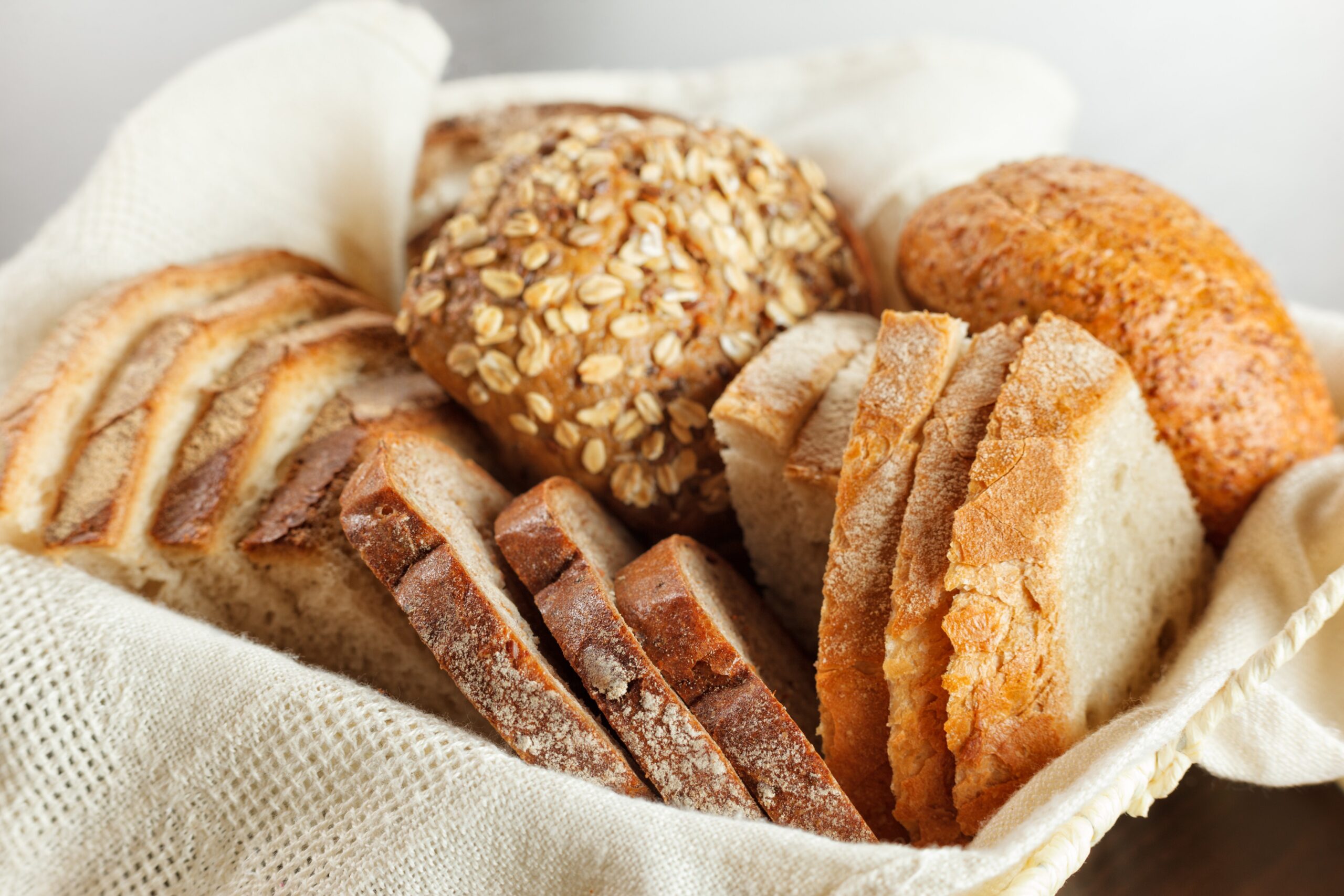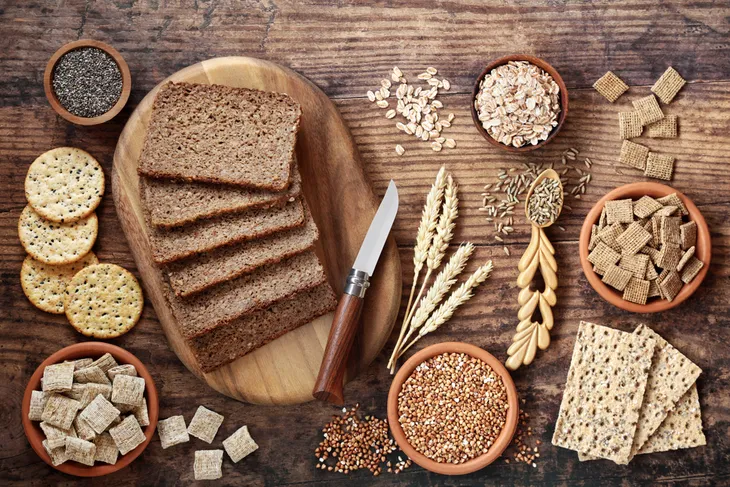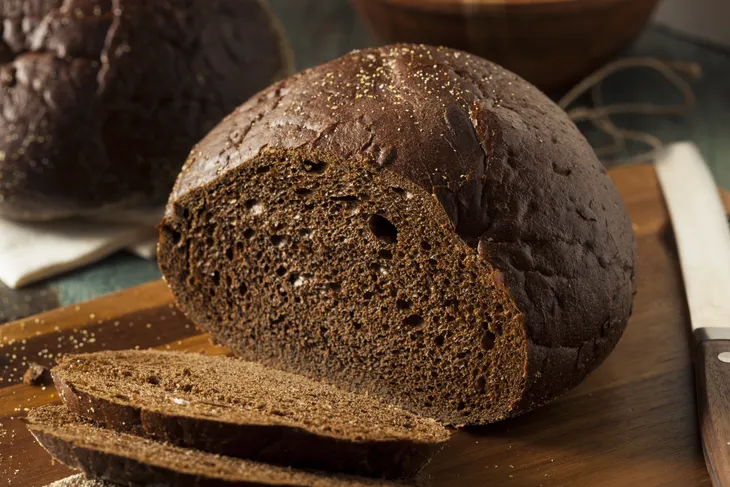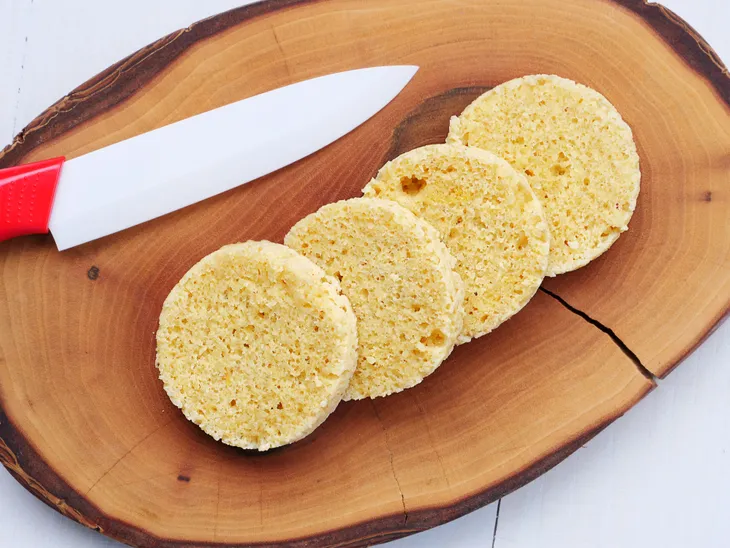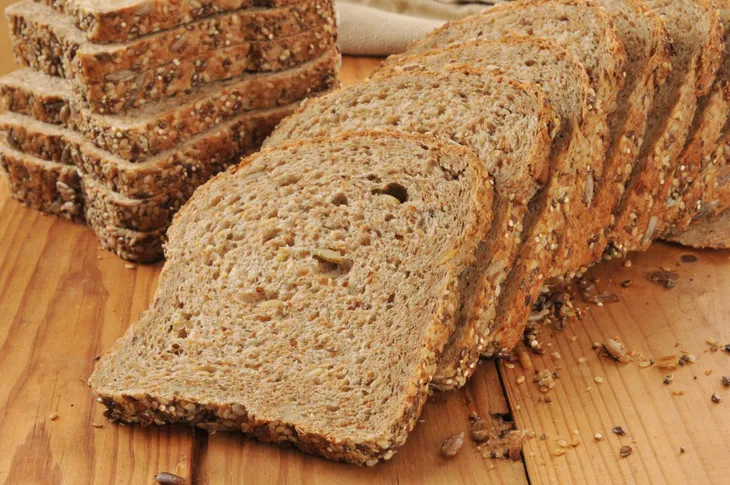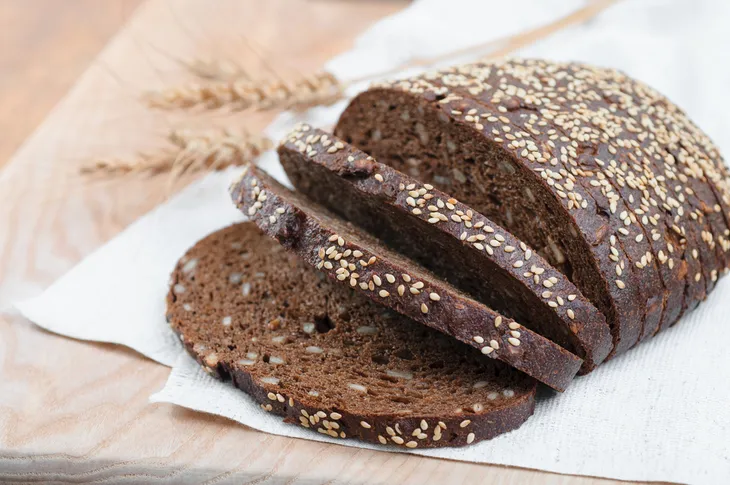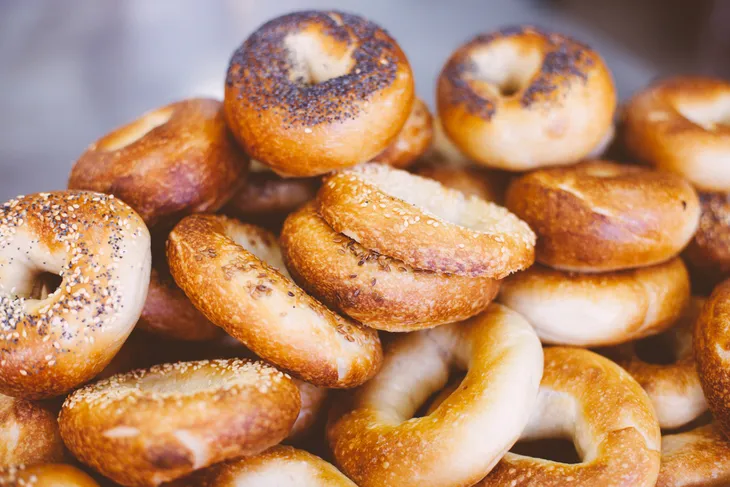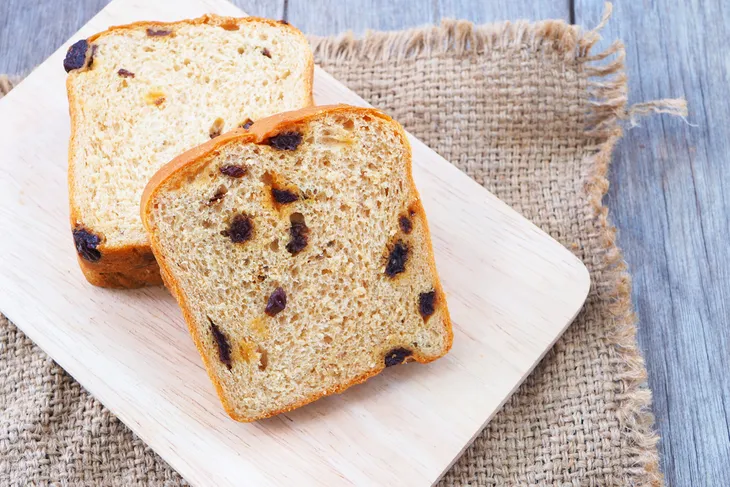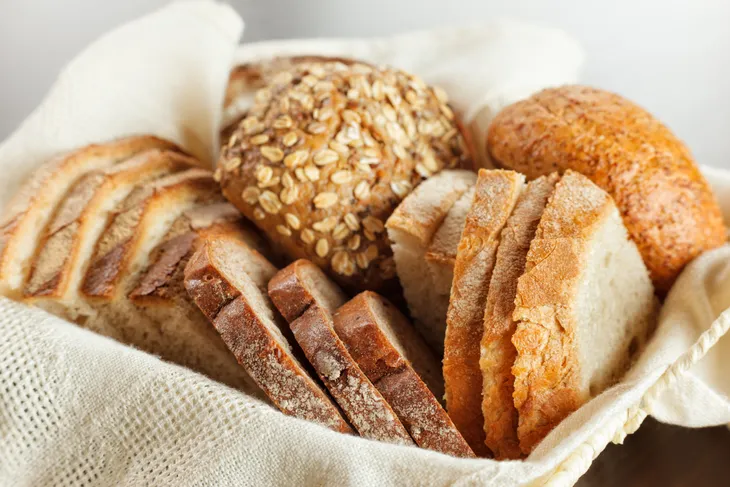- Bread is often considered a healthy part of a balanced diet when consumed in moderation.
- Bread is high in carbohydrates, which can sometimes lead to weight gain.
- Wheat bread can cause digestive symptoms in individuals with gluten intolerance and celiac disease.
- Whole-wheat and multi-grain bread may provide multiple health benefits.
- Over-consumption of white bread may contribute to various health issues.
Bread is an everyday dietary staple that offers a variety of health benefits when eaten in moderation. However, over-consumption of certain bread varieties may lead to weight gain, blood sugar spikes, increased hunger, and gastrointestinal issues.
Understanding how different types of bread may affect your overall health and wellness is essential when creating an individualized diet plan to meet your specific needs … or just deciding what loaf to grab at the grocery store next time you go shopping. Here’s a look at how different types of bread affect your health.
Healthiest Bread Varieties
With over 200 varieties of bread throughout the world, choosing the healthiest option can be challenging. Many bread types are high in sugar and carbohydrates, while others are made with all-natural, organic ingredients. Some of the healthiest bread types recommended by health professionals include sprouted whole-grain bread, oat bread and sourdough bread.
Sprouted whole-grain bread is low in sugar and calories and high in protein. It’s also suggested that the sprouting process boosts the bread’s antioxidant levels while decreasing its carbohydrate levels. Oat bread is high in fiber, which may help regulate blood sugar and lower cholesterol levels. Sourdough is considered a healthy option due to the fermentation process of the dough. Fermentation creates natural probiotics that may support digestion and gut health.
Eat More: Whole-Grain Bread
Whole-grain bread (sprouted and regular) makes a healthy addition to your daily diet. Research has shown that three or more servings of foods containing whole grains daily can reduce the risk of developing heart disease by 30-percent.
In addition to providing heart-healthy benefits, 100-percent whole-grain bread is an ideal source of fiber, B vitamins, potassium, and magnesium. Whole grains are often recommended as a dietary option for individuals at risk for diabetes, and the high-fiber content in whole-grain bread has been shown to support digestion.
Eat More: Pumpernickel Bread
Pumpernickel bread is high in fiber and generally lower in calories than white and wheat bread. It has been shown that the high levels of fiber in pumpernickel bread feed on the healthy bacteria in the gastrointestinal tract, which in turn may aid digestion and support gut health.
Pumpernickel bread is also considered a low-glycemic food with little effect on the body’s blood sugar levels, making it a healthy dietary option for individuals with diabetes.
Eat More: Coconut Flour Bread
Coconut flour bread offers a wide range of health benefits when compared to bread made with wheat flour. The low glycemic index in coconut flour allows for slower digestion, which may aid in controlling blood sugar spikes in individuals with diabetes.
Coconut flour is also lower in calories and carbohydrates than wheat flour, and it contains fiber and protein for healthy digestion. Bread made with coconut flour also serves as a healthy bread alternative for individuals with gluten intolerance and celiac disease who cannot digest traditional wheat flour bread properly.
Eat More: Brown Rice Bread
Individuals who follow strict vegan diets cannot consume bread made with dairy or eggs. Brown rice bread is a popular vegan bread alternative that is naturally gluten-free, high in fiber, and rich in minerals such as magnesium and potassium.
Brown rice is considered a heart-healthy food and may help reduce the risk of cardiovascular issues such as high blood pressure and stroke. At the same time, magnesium and potassium support strong bones and muscle function. The high fiber content in brown rice bread may also aid in regulating bowel movements and promoting healthy digestion.
Eat More: Rye Bread
Rye bread is considered ideal for weight loss due to its high soluble fiber content and overall density. Soluble fiber provides a ‘full’ feeling, and research has shown that rye bread may aid in appetite suppression.
Rye bread is also rich in selenium and protein. Selenium may help support thyroid function and increase antioxidant activity in the body for improved immune health. Protein is believed to help lower hunger hormone levels and promotes healthy body weight.
Eat Less: White Bread
White bread is often referred to as an unhealthy bread option due to its high carbohydrate content and the fact that most white bread varieties are made with refined grains. The refinement process removes fiber, bran, and wheat germ from whole grains, which leads to rapid digestion when consumed. When food is digested rapidly, it can cause a host of uncomfortable symptoms, including blood sugar spikes, increased hunger, bloating, and nausea.
Many types of white bread contain additives such as high fructose corn syrup for extra flavor and to help extend the bread’s overall shelf life. High fructose corn syrup is considered safe in small amounts, but over-consumption may contribute to inflammation in the body and weight gain.
Eat Less: Brioche Bread
Brioche bread is known for its soft, fluffy texture and delicious taste, and it’s used in a wide variety of recipes, ranging from sandwiches and burgers to bread pudding. While brioche is a top choice in terms of flavor, it’s not considered a healthy option when compared to whole-grain, sourdough, or oat bread.
Brioche is high in fat, which can lead to weight gain and potentially increase LDL cholesterol levels in the blood. Consuming excess carbohydrates and calories over extended periods of time has been linked to poor metabolic health and weight gain, and a single brioche hamburger bun has approximately 240-calories and 39-grams of carbohydrates.
Eat Less: Hawaiian Sweet Bread
Hawaiian sweet bread is high in calories and carbohydrates, making it a less-healthy choice than whole-grain bread, sourdough bread, and other brown bread varieties. Specific recipes for Hawaiian sweet bread can vary, but most types contain milk, which can lead to digestive distress in individuals with dairy sensitivities.
Commercial Hawaiian sweet bread is known for having low-to-no fiber content and containing high levels of chemicals and preservatives. Additionally, a single Hawaiian sweet roll has approximately 80-grams of sodium. Excess sodium intake is sometimes linked to heart disease and high blood pressure, and it can cause bloating due to water retention.
Eat Less: Bagels
Bagels are extremely high in carbohydrates and calories when compared to many other types of bread, including white bread. Specific nutrition facts can vary depending on the bagel recipe, but one traditional water bagel generally contains approximately 56-grams of carbohydrates and 289-calories. In addition to possible weight gain, side effects from over-consumption of carbohydrates can include digestive issues such as bloating and constipation, fatigue, high blood sugar levels, and sugar cravings.
Since bagels are often enjoyed with spreads and toppings such as cream cheese, jam, or peanut butter, this can add to the overall calorie count of a single traditional water bagel.
Eat Less: Cinnamon Swirl Raisin Bread
While specific ingredients can vary depending on the brand and recipe, cinnamon swirl raisin bread is known for its high sugar content. Some brands contain as much sugar in a single serving as two chocolate sandwich cookies.
A common misconception is that the raisins and high soluble fiber content in cinnamon swirl raisin bread make it a healthy bread option. While raisins provide a good source of antioxidants and fiber, the overall sugar content and high carbohydrate levels in each slice can, unfortunately, lead to various issues ranging from increased hunger and weight gain to blood sugar problems.
Finding a Healthy Balance With Different Types of Bread
The USDA recommends 6 to 11 servings of grain products per day as part of a healthy and balanced diet. While whole-grain bread tends to be at the top of the list in terms of health benefits, many types of bread (including sweeter bread varieties) provide essential vitamins, nutrients, and fiber when eaten in moderation.
By weighing the pros and cons of different types of bread and taking your own dietary needs and specific tastes into consideration, you’ll be able to make smart, informed decisions when purchasing bread or making it at home.
